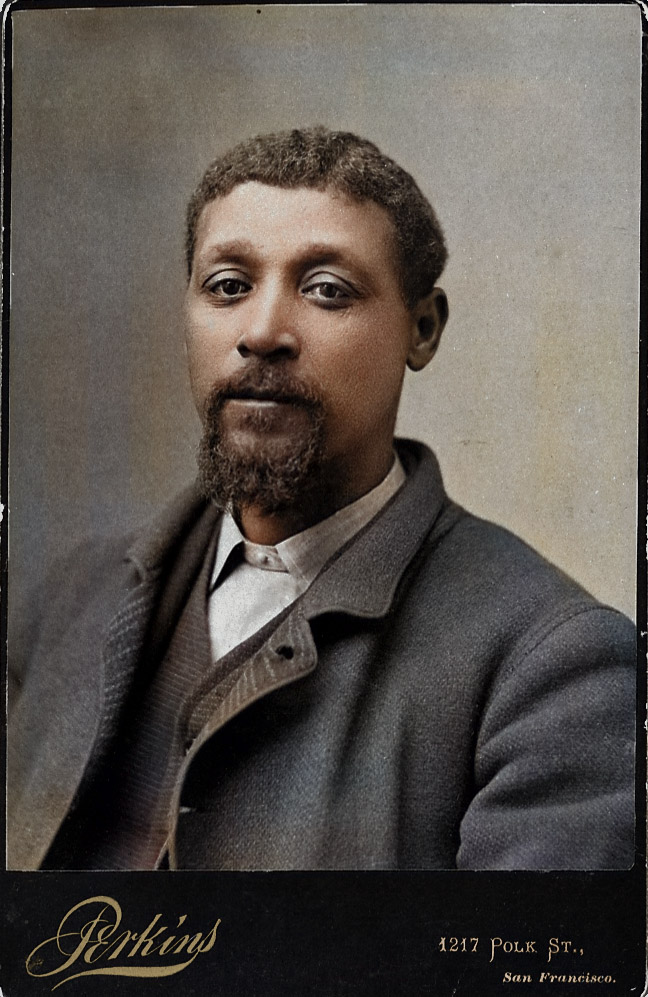YOSEMITE STAGE DRIVER
The Life and Times of George Monroe and His Family
By Tom Bopp
“Just as there are the greatest of soldiers and sailors, artists and mechanics at times
so there are greater stage drivers than their fellows and George Monroe was the greatest of all.”
– A.H. Washburn, Supt., Yosemite Stage & Turnpike Company
The Life and Times of George Monroe and His Family
By Tom Bopp
“Just as there are the greatest of soldiers and sailors, artists and mechanics at times
so there are greater stage drivers than their fellows and George Monroe was the greatest of all.”
– A.H. Washburn, Supt., Yosemite Stage & Turnpike Company


CHAPTER I - EXCERPT
Saturday evening, the twenty-seventh of November 1897, Mariposa, California—More than a few old timers shaking open the Mariposa Gazette were likely jolted into remembrance of their old neighbor, Mary Monroe. Here was an unfitting end for someone of her achievements, an African-American woman who had left her home in antebellum Georgia, journeyed alone into the unruly chaos of the California Gold Rush to rescue her husband from an unseemly fate, and to top it all raised their son to become the most celebrated stage driver at the dawn of Yosemite tourism.
Before catching the sad little blurb about Mary, readers would first have scanned the local items: James McCauley stripped of control of his hotel at Glacier Point in Yosemite. John Tatum convicted of a Yosemite stage holdup. An advertisement proclaiming, “Don't go to Klondike without taking along a Winchester Repeating Rifle.” And then:
“Mrs. Mary A. Monroe, an aged colored lady, who formerly lived in Mariposa but recently a resident of San Diego, was killed by an electric car in that city on the 14th of this month. Mrs. Monroe was deaf and stepped directly in front of the approaching car without noticing it. —Merced Star” [i]
Pausing over the news, older readers of the Gazette might have pictured the Monroes on their ranch down at Pea Ridge . Their place was easy enough to find—just head south from town along Mariposa Creek through Mormon Bar, then loop southeast around the bulge of Lookout Mountain. It’s all typically beautiful Sierra foothill scenery with plenty of grass, peppered with oaks, pines, manzanita, and the like. A rough, narrow, rocky wagon road wound through the hills, affording glimpses of Red Mountain and the lower Sierra Nevada mountains, dipping along creeks in cool shaded glens. About six miles from Mariposa you’d arrive at Pea Ridge, also called the Red Mountain or Chowchilla district, in reference to the Chowchilla River (west fork) and Red Mountain, both within four miles to the east.
With the setting sun and a sliver of moon outside the window on that cool Saturday evening, long-time residents folding their newspapers surely felt the passing of an extraordinary family—their neighbors for over 35 years. [ii]

Road skirting Monroe Ranch site (Author photograph) [iii]
Mary’s labors in building the family ranch were admired throughout the district. Her husband had been a well-known barber in Mariposa and a pillar of the local Black community. A few might have remembered Mary’s brother, George Millen, a blacksmith who had lived and worked for a few years at Pea Ridge. But Mary’s son, George, had become a legend. His portrait graces the lobby of the Wawona Hotel, where he picked up and delivered countless travelers. Today, guests looking into Monroe’s quiet eyes are given to wonder what stories they might tell.
[i] Mariposa Gazette, November 27, 1897, pg. 1, col. 1, 2, 4. James McCauley is reported as “quietly circulating around Mariposa” after his ouster from Yosemite, which had been reported two weeks earlier (Mariposa Gazette, November 13, 1897, pg. 1, col. 2).
[ii] My guess as to the moon’s phase and position that evening derived from astropixels.com - this site currently offers dates of moon phases in the 1800s.
[iii] Signal Peak (aka Devil Peak) is visible on the horizon, in line vertically with the left side of the dirt road. Also visible from Wawona, the mountain serves as a geographical fulcrum between the Monroe Ranch and George Monroe’s future base of employment.